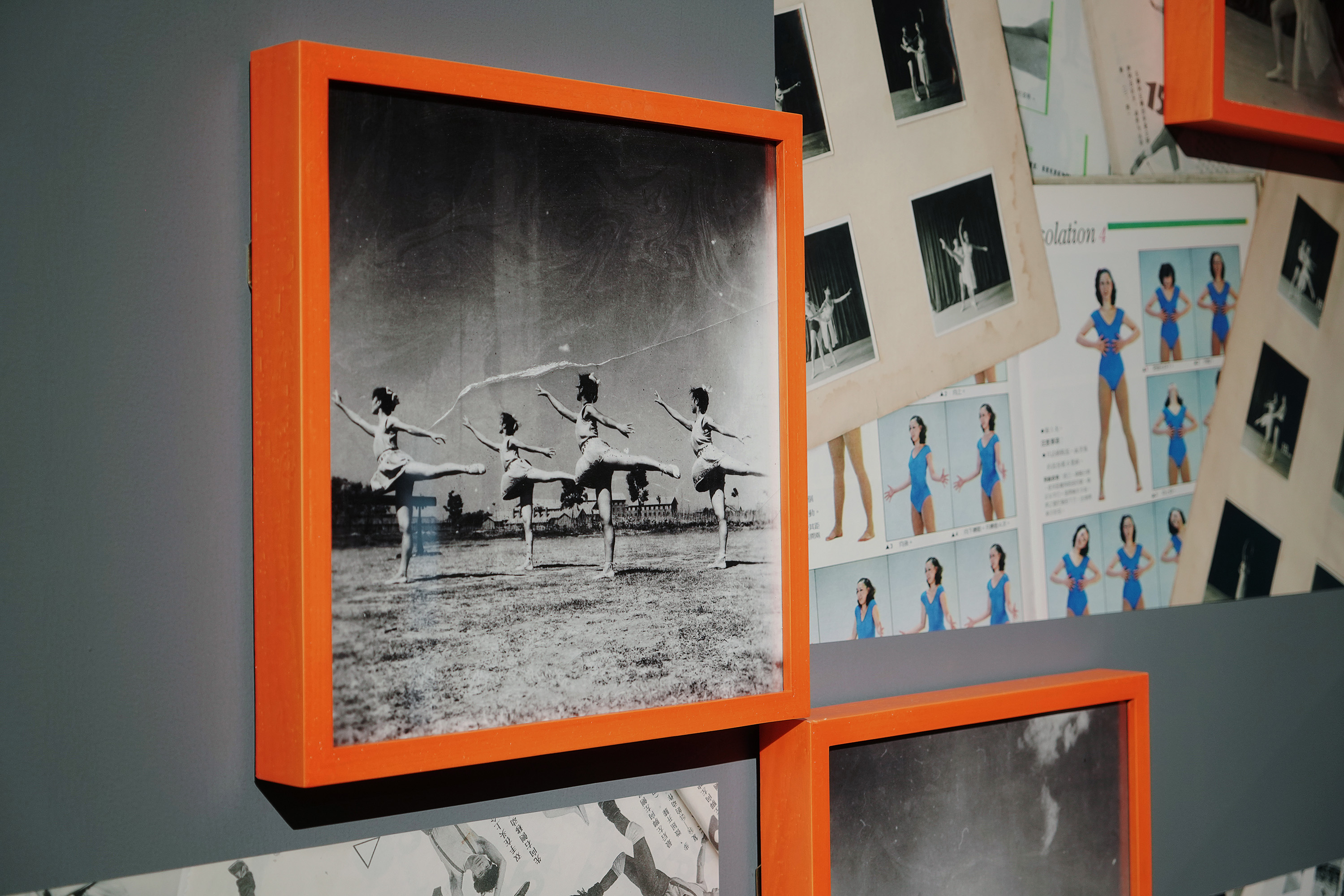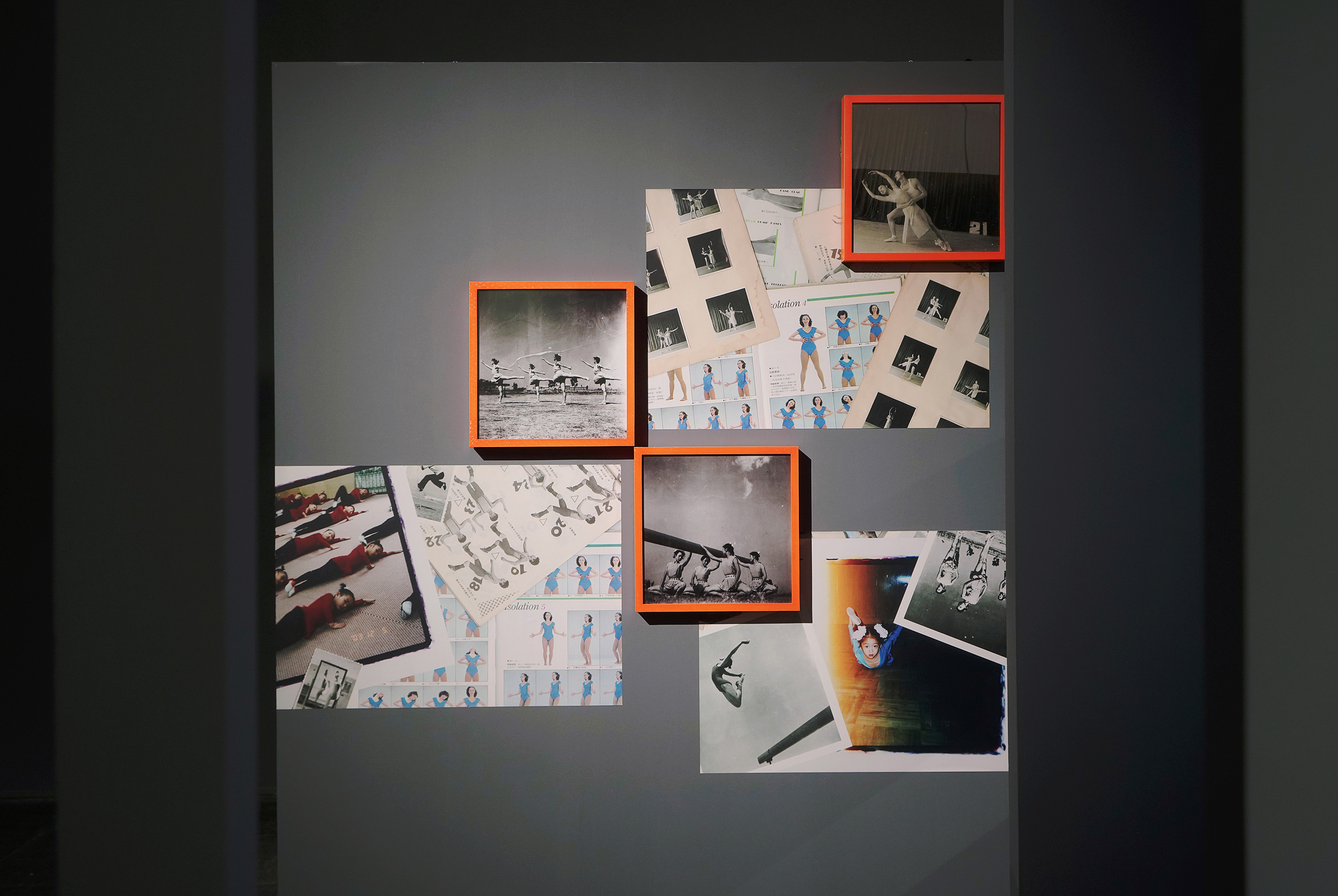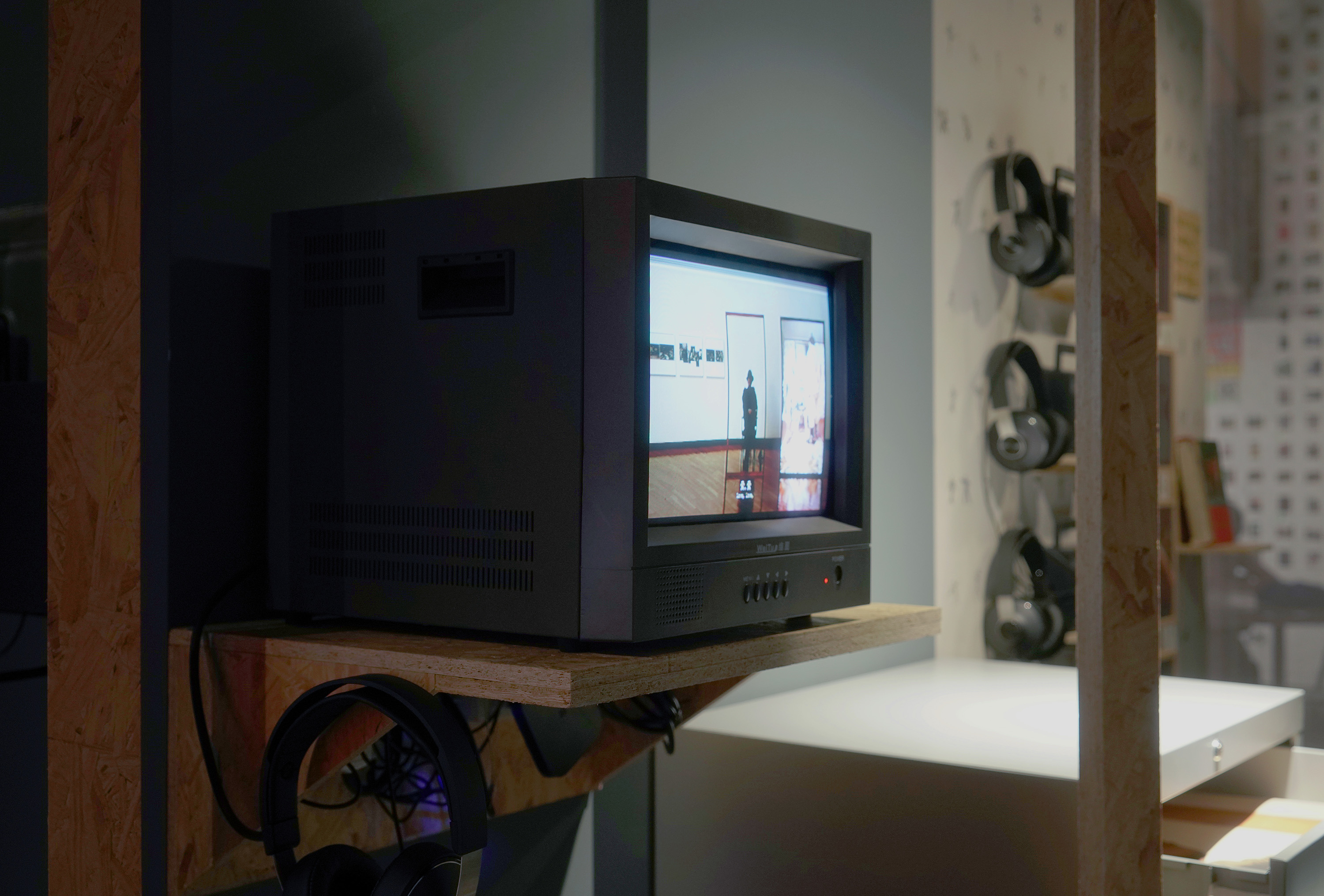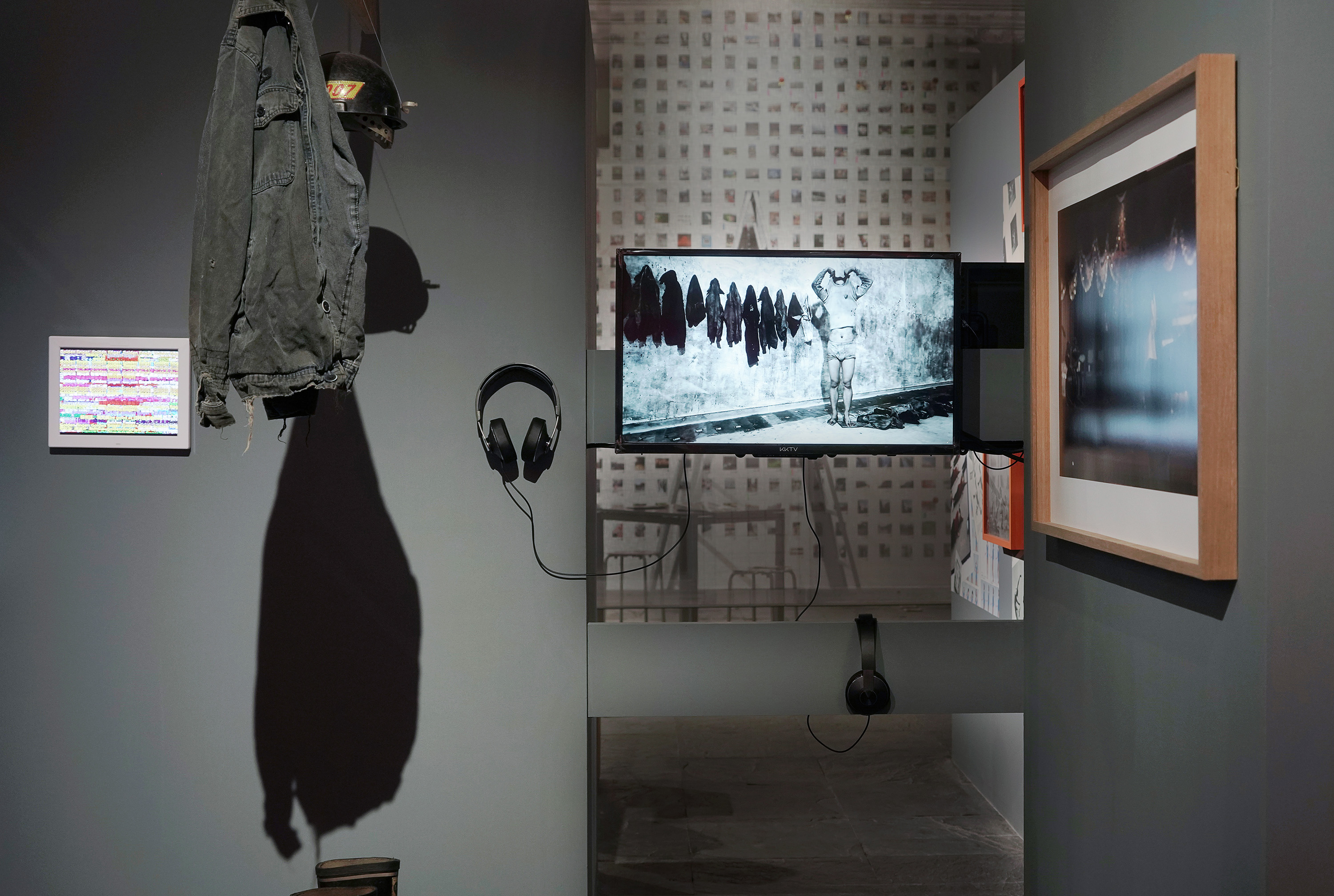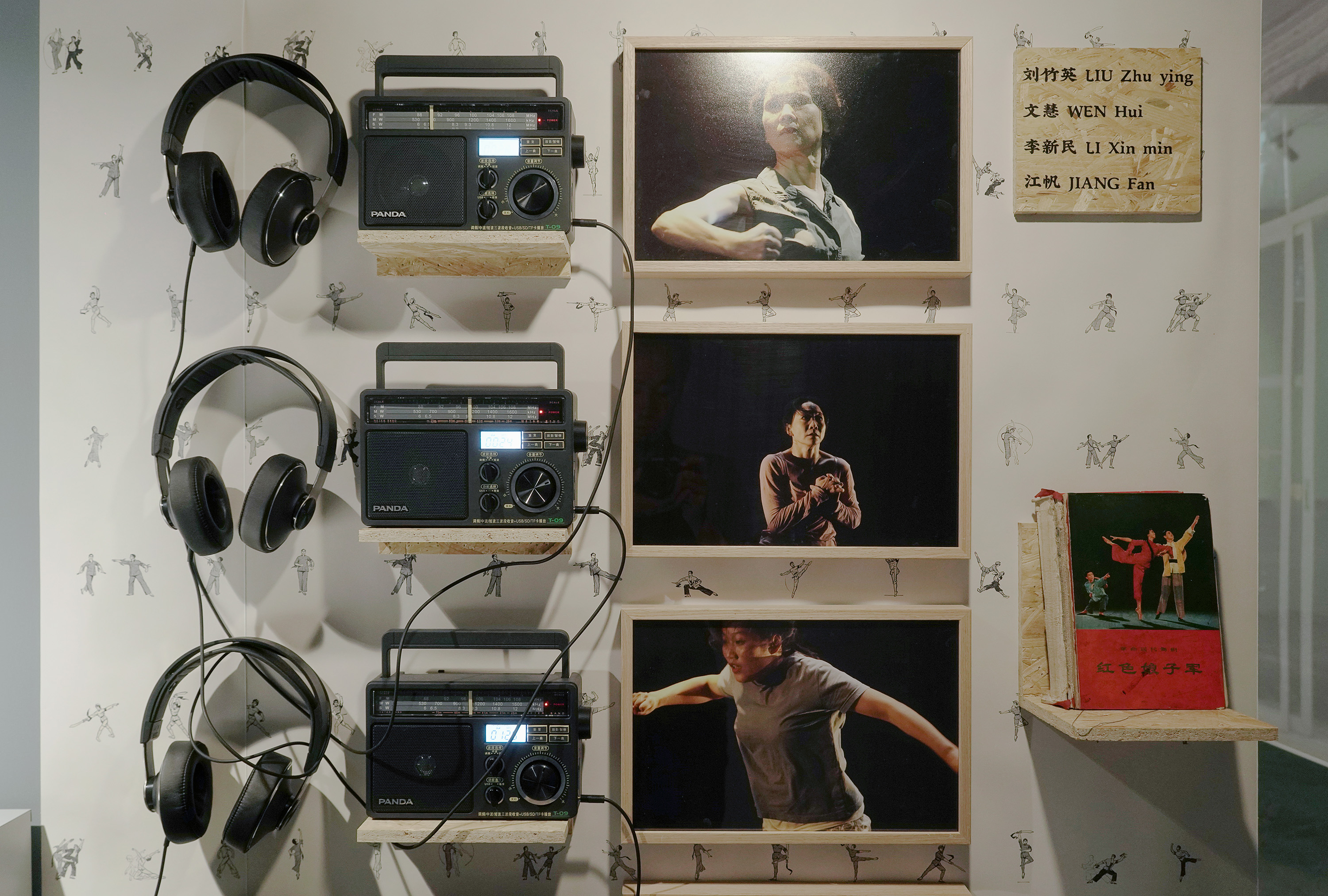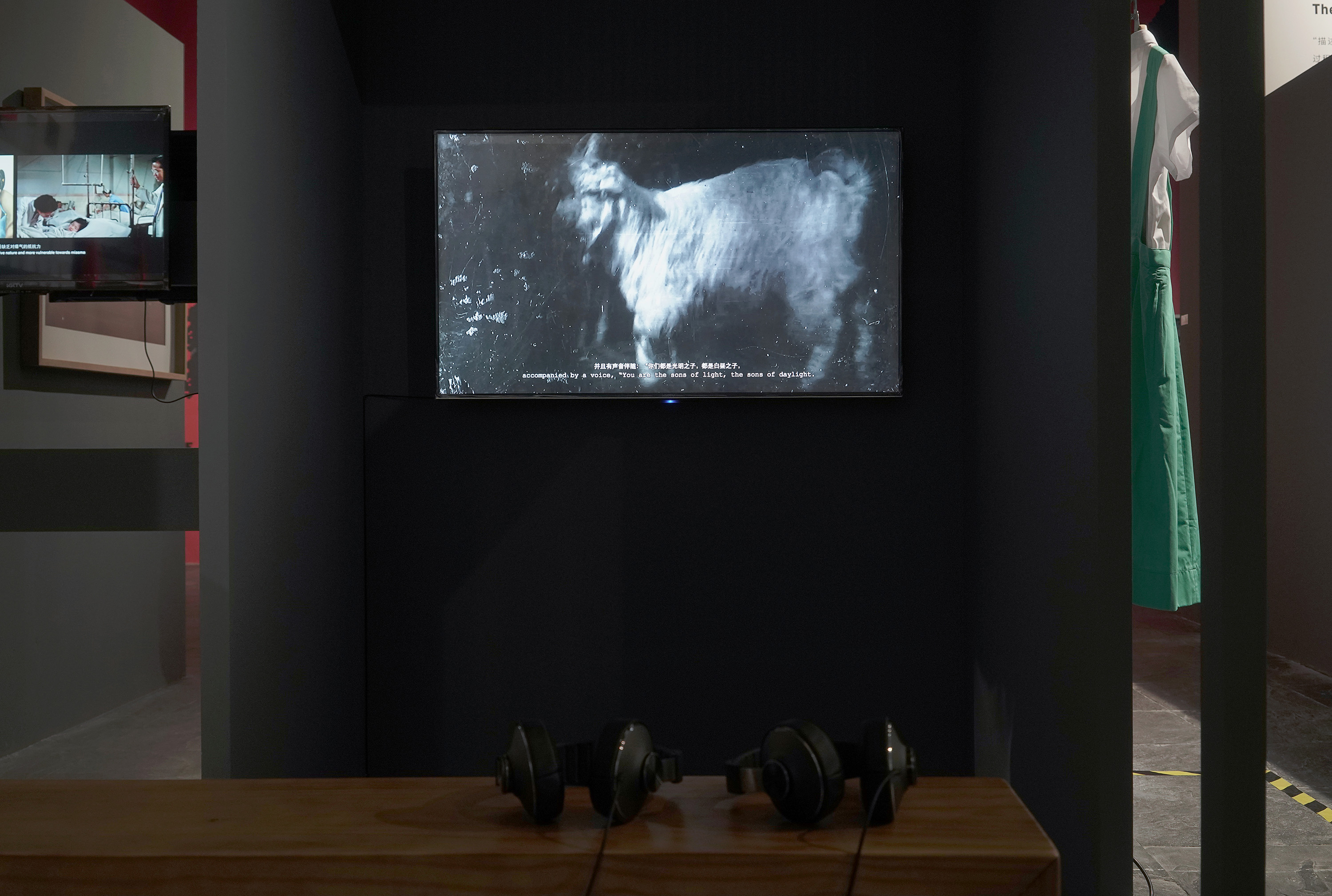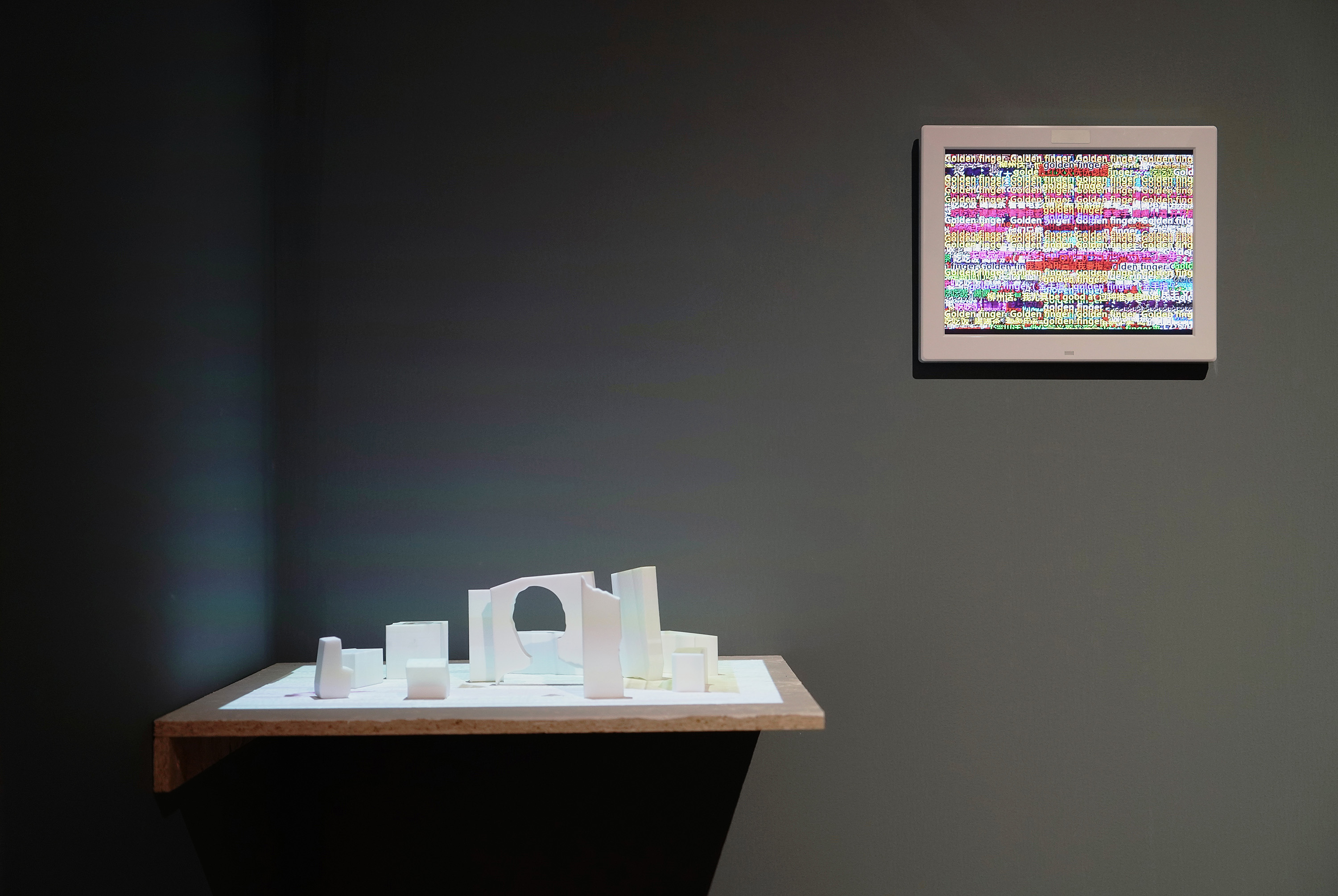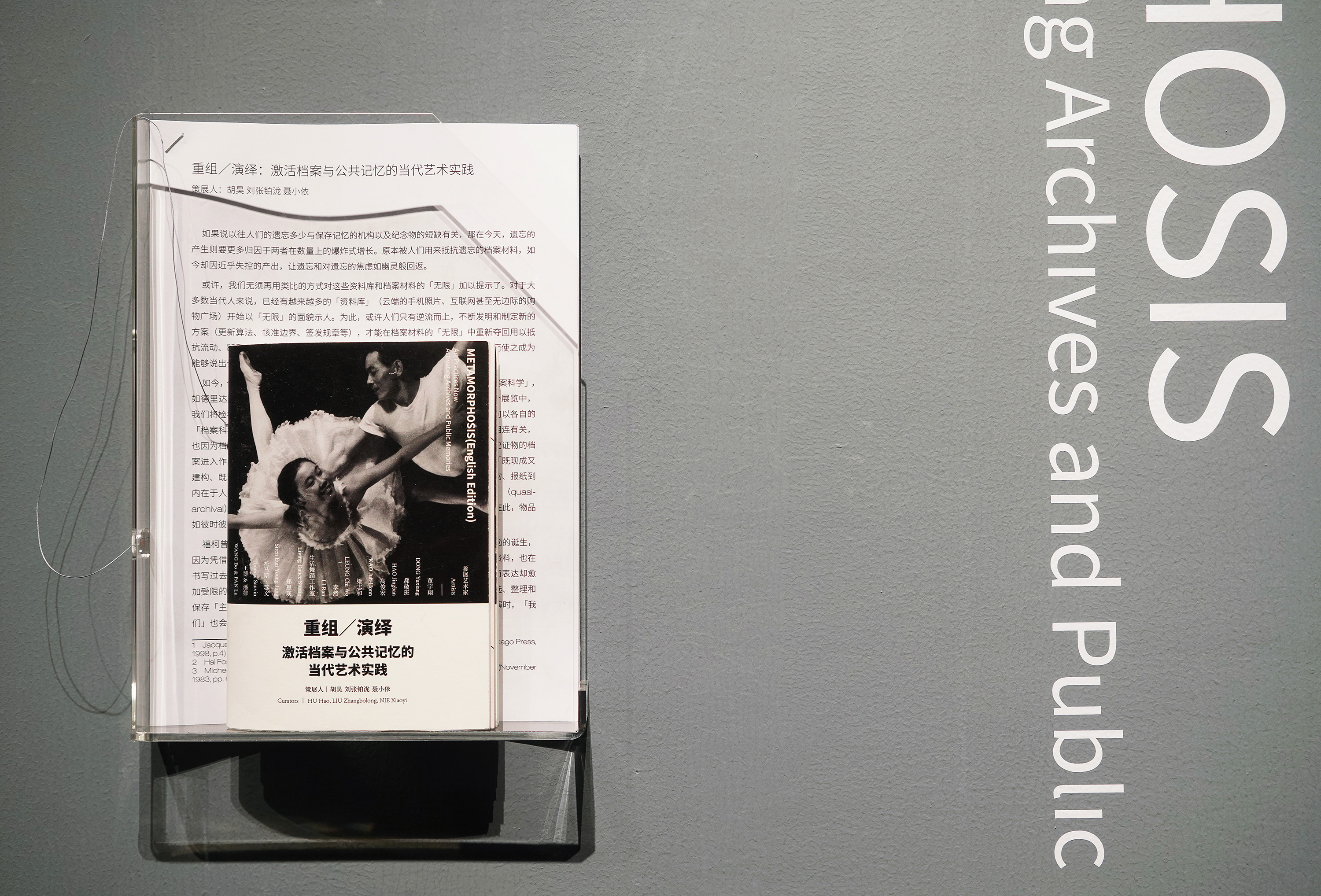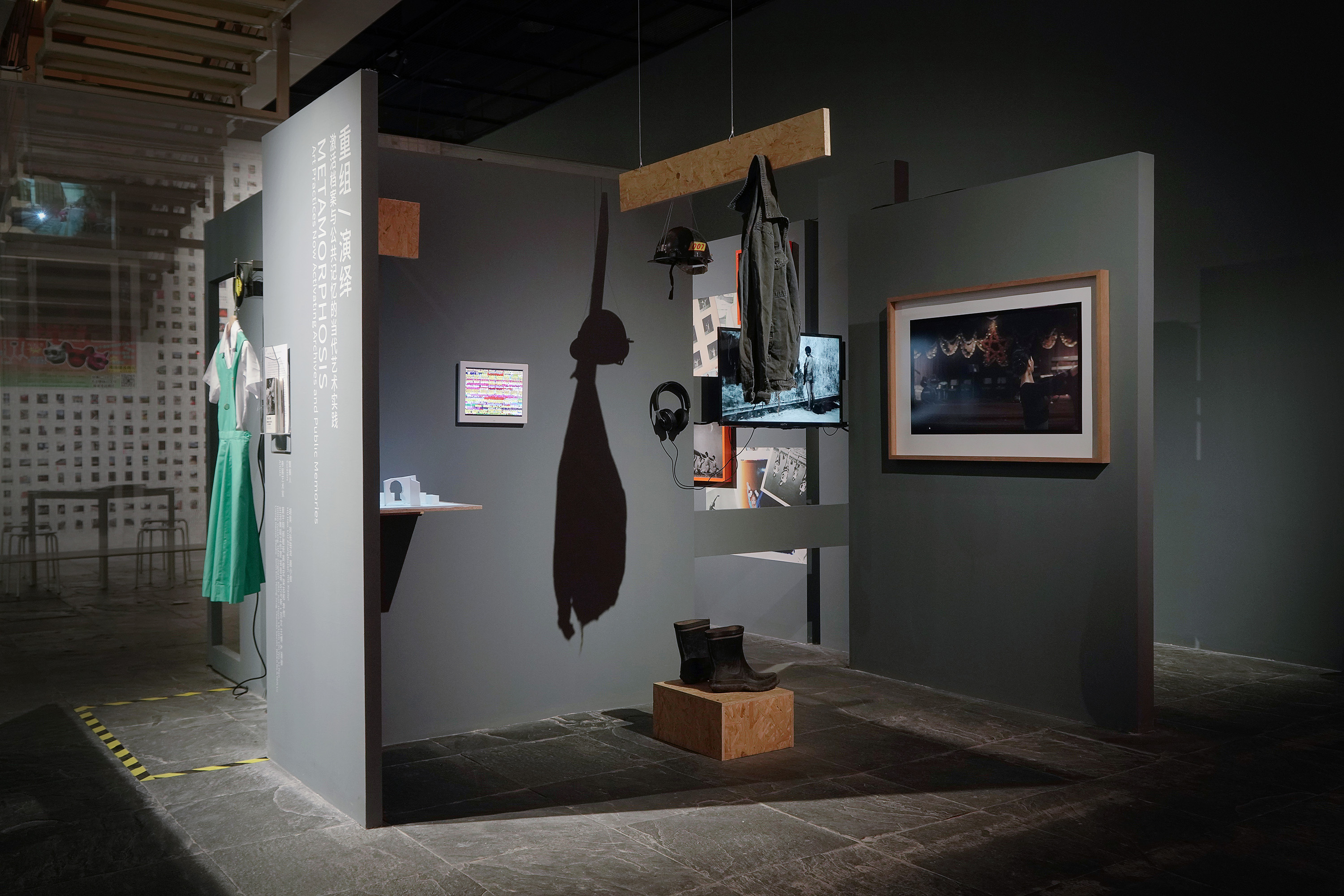
Metamorphosis: Art Practices Now Activating Archives and Public Memories
重组/演绎:激活档案与公共记忆的当代艺术实践Co-curated by Hu Hao, Liu Zhangbolong and Nie Xiaoyi (alphabetical order)
策展人:胡昊、刘张铂泷、聂小依 (按姓氏拼音首字母排序)
Artist: Dong Yuxiang, Hao Jingban, Kao Jun-Honn, Leung Chi-wo, Li Ran, Living Dace Studio, Siren Eun Young Jung, Thomas Sauvin, Wang Bo & Pan Lu
艺术家:董宇翔、郝敬班、高俊宏、梁志和、李然、生活舞蹈工作室、郑恩瑛、托马斯·苏文、王博&潘律
2018. 9. 6 - 2018. 11. 30
OCAT Institute, Beijing
OCAT研究中心(北京)
Research-Based Curatorial Project: Shortlist Exhibition
2018研究型展览:策展方案入围展
Download the Full Article and Exhibition Leaflet
全文及展览图册下载 (需要VPN)
Metamorphosis: Art Practices Now Activating Archives and Public Memories
重组/演绎:激活档案与公共记忆的当代艺术实践What we call memory is in fact the gigantic and breathtaking storehouse of a material stock of what it would be impossible for us to remember, an unlimited repertoire of what might need to be recalled[...] No society has ever produced archives as deliberately as our own[...]Since no one knows what the past will be made of next, anxiety turns everything into a trace, a possible indication, a hint of history that contaminates the innocence of all things.
Pierre Nora, Between Memory and History: Les Lieux de Mémoire*
Nothing reveals better than Nora's paragraph in which he illuminates the contemporaries' dilemma of memory: if the scarcity of archival devices and commemorative objects could be blamed for forgetting in the past, then the occurrence of forgetting nowadays is more likely to be attributed to the explosive increase of the two in quantity. Archives that were used as a tool of resisting oblivion are now produced rampantly, which leads to the ghostly return of forgetting and the anxiety about forgetting.
Perhaps it is not necessary to use analogies to hint at the infinity of these archives and archival materials. To the majority of the contemporaries, more and more archives (such as smart phone photos saved on cloud, the overwhelming Internet, or even massive shopping malls with seemingly no borders) are becoming "infinite". When facing these extensive databases, people's attitudes often shift between either rubbing their hands, eagerly waiting or feeling at loss as having no idea where to start. Feeling eager is because this "unfathomable storehouse" indeed carries stocks of precious memories. Only when the disoriented contemporaries look back upon those archived moments do they get the sense of being on site of and belonging to a shared historic moment. Whereas not knowing where to start is because the sheer volume of the archival materials is nearly infinite, and what used to be apparent references are long lost in the ocean of materials. Therefore, perhaps the only way to regain a few anchor points in this endless ocean is to keep inventing and formulating new schemes (updating algorithms, authorizing new demarcations, signing new regulations) so that we can resist the lost, rupture and disorder of our anchors, so that the disorderly archival materials can continue to constitute orderly archives and create subjects speaking the memories.
The practice of aggressively arranging disorderly materials into orderly systems has now become an established branch of science – Archival Science. As Derrida said, a science of the archive must include [...] the theory both of the law which begins by inscribing itself there and of the right which authorizes it.** In this exhibition, we will respectively examine how nine artists and artist collectives from China's mainland, Taiwan, Hong Kong, Korea and France, handle specific public memories with their own "archival science". The choice of the themes of public memories is related to the fact that archives have been connected to the public events for a long time, as well as the fact that the ingenious use of archives can often undermine or even overturn the taken-for-granted memories and historical narrative structures--once they are introduced into art, archives that used to be historical evidences are transformed to reveal other secluded narratives. The selected artists tend to choose from their collection of materials elements that are both "ready-made and constructive, realistic and fictive, public and private" (ranging from physical objects such as photos, videos, clothes and newspapers to the dances and 'broadcaster's tones' attached to bodies), 'quote and juxtapose' these elements in an archival or quasi-archival manner and present them as "complex of texts and objects."***Here, the objects are now slices of the world there and then, whereas the texts renarrate the memories of the people.
It is our hope that the art practices presented in this exhibition would lead the audience to identify the origins of the archival materials used in the works and realize their transformations relatively easily, so that the audience may recall their own personal memories and understandings of public life. Memories often defy the reality but are closer to the personal truth. When the artists re-visit historical sites and re-arrange memories of their own and the others, not only do they carry out a difficult realization of imagination, but also transform themselves in the process of examining and creating. In a romantic conception, each individual is a carrier of the archive, while the attempt to re-organize the materials and apply another narrative method besides the general mode of classification is the individual endeavor to approach liberation.
Foucault has stated that the notebook as a "new technology" to the ancient Greeks had a "destructive impact" on their life no less than what computer has on modern people; by being able to record what one hears and sees on a daily basis, humans obtain documentations for future contemplation and achieve re-constitution of oneself in the process of writing about the past.****Living in the age of automatic documentation by machines, automatic backup to cloud and automatic generation of archives, our expression is however increasingly restrained. We are more than ever in need of a sense of historical responsibility to take care of individual memories independently for shared experiences, just like the Hypomnemata of the ancient Greeks who autonomously selected, compiled and kept a "subjective archive". And later, when memory is put on display and the shared experience emerges once again, we will also reunite with one another.
我们今天所称的记忆,实际上是由庞大得令人目眩的材料积 累和深不可测的资料库构成的,这些资料库储存着我们无法记住 的东西,对我们可能需要回忆的东西进行无边无际的编目。...... 没有哪个时代像我们这个时代这么自觉的产出档案,......人们禁 止销毁,将所有东西都立为档案,纪念物的领域被不加区分地扩大, 记忆的功能病态地膨胀,这功能与记忆失落的焦虑紧密相连......
皮埃尔·诺拉,「记忆与历史之间:场所问题」*
没有什么能比诺拉的这段话更能揭示当代人在记忆问题上所遭遇的困境:如果说以往人们的遗忘多少与保存记忆的机构以及纪念 物的短缺有关,那在今天,遗忘的产生则要更多归因于两者在数量 上的爆炸式增长。原本被人们用来抵抗遗忘的档案材料,如今却因 近乎失控的产出,让遗忘和对遗忘的焦虑如幽灵般回返。
或许,我们无须再用类比的方式对这些资料库和档案材料的「无 限」加以提示了。对于大多数当代人来说,已经有越来越多的「资 料库」(云端的手机照片、互联网甚至无边际的购物广场)开始以「无 限」的面貌示人。人们在面对它们时总是在摩拳擦掌和手足无措 之间摇摆。摩拳擦掌是因为这些「深不可测的资料库」的确承载 着珍贵的记忆,在当下茫然向前的人们往往在回头检阅它们时才能 体味出共处历史之中时的特别;手足无措则是因为在数量上趋近于 「无限」的档案材料着实让人无从下手:曾经显而易见的参照物早 已湮灭于澎湃的资料之海中。为此,或许人们只有逆流而上,不断 发明和制定新的方案(更新算法、核准边界、签发规章等),才能 在档案材料的「无限」中重新夺回用以抵抗流动、断裂和失序的 锚点,才能让无序的档案材料(archival materials)不断生成为 有序的档案(archive),继而使之成为能够说出记忆(speaking the memory)的「主体」。
如今,借助强力将无序材料整理为有序系统的实践已经发展为 一门科学——「档案科学」,如德里达所言,它自行制定规则,同时 以其自身存在来保证规则的实施。** 在这个展览中,我们将检视来自 中国大陆、台湾、香港,以及韩国、法国的 9 位(组)艺术家如何以各自的「档案科学」处理特定的公共记忆。选择公共记忆既与档案曾 长久地都和公共事件相连有关,也因为档案的绝妙使用往往可以构成 对人们普遍认知的挑衅和反转——曾作为历史证物的档案进入作品后 被调转用以开启其他幽蔽的叙事。艺术家们往往在搜集资料后挑选「既 现成又建构、既现实又虚构、既公共又私人」的素材(从外在于人们 的照片、录像、衣物、报纸到内在于人们身体的舞蹈和「广播腔」), 并把它们按照档案,或者是「准—档案」(quasi-archival)的逻辑进 行「引用与并置」,最终呈现出「文本与物品的复合体」***。在此, 物品如彼时彼地世界的切片,而文本则重述了人们的记忆。
我们希望在此呈现的艺术实践能相对容易地被观众辨认出它们的来处并意识到它们的变形,以此唤起观众自身的回忆和对公共生 活的不同理解。记忆往往违拗真相,但却接近个人的真实。艺术家 们重访历史现场、重排自己与他人的记忆,不仅是艰难地实现想象, 也在检视和创造的过程里转化着自我。在浪漫的认知里,每个个体 也是档案的承载形式,而重新组织材料去尝试普遍归类法之外的另 一种叙述方式,也是个体接近自由的尝试。
福柯曾说,笔记本这种「新技术」对古希腊人生活的「破坏性 影响」不亚于电脑的诞生,因为凭借在这样一个固定的纸本上记录 所见所闻,人们不仅拥有了供来日沉思的资料,也在书写过去中塑 造出自我。**** 今天在机器自动记录、云端自动备份、档案自动生成 而表达却愈加受限的状态里,我们比以往更需要如同古希腊人书写「思想笔记」(hupomnemata)一样自行挑选、整理和保存「主观档案」, 以独立的个体记忆为共同经历的历史负责。而当记忆再次上演时,「我 们」也会于观看中重逢。
* Pierre Nora: Realms of Memory: Rethinking the French past, Chinese Translation by Huang Yanhong, et al. Nanjing: Nanjing University Press, 2015, pp.12-13.
** Jacques Derrida, Archive Fever: A Freudian Impression (Chicago: The University of Chicago Press, 1998, p.4)
*** Hal Foster, "An Archival Impulse", October 104 (Autumn, 2004, p.5)
**** Michel Foucault, Paul Rainbow, and Hubert L. Dreyfus. "How We Behave", Vanity Fair (November 1983, pp. 61-68)
